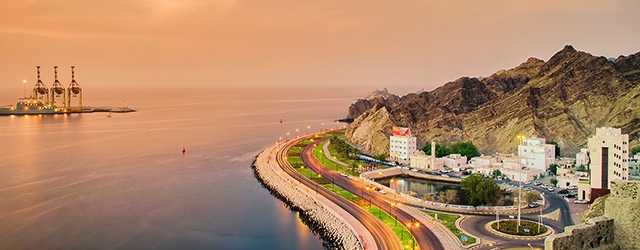Oman faces a serious cash squeezedue in part to factors beyond its control and in part to factors of its own making.

Fears of conflict between the US and Iran and its allieshaveovershadowed the region’s economic problems. TheSultanate of Oman—which maintains cordial relations with both the US and Iran and served as a go-between as tensions flared after a US drone was shot down in the Gulf of Oman—facesa cash crunch driven by weak economic growth and low oil prices.
Funding and liquidity will remain tight for Oman’s banks for 12-18 months as private sector credit growth and government borrowing exceeds growth in deposits, according to a recent report by Moody’s Investors Service. The ratings agency estimates that the government’s financial position will remain strained so long as world oil prices remain below Oman’s breakeven threshold. The breakeven price refers to the price per barrel at which oil would have to sell in order for the producing country to break even on its budget. The figure varies from country to country, but Oman’s breakeven price is $85 per barrel; Moody’s projects oil prices will range between $50 and $70 in the medium term, nowhere near Oman’s breakeven requirement.
“When oil pricesare high, Oman’s governmentand export revenues are high as a result,” explains Alexander Perjessy, vice-president and senior analyst in Moody’s Sovereign Risk group, during a telephone interview from Dubai. Declining and stagnant oil prices have led to current and fiscal account deficits since 2015.
Oman’s growth is projected to slow to approximately 1.2% in 2019, down from 2.1% in 2018, according to the World Bank. The World Bank attributes the drop to the December 2018 agreement by OPEC+ (OPEC countries in alliance with Russia and other oil producers)to cut oil production. At the same time, deficits will remain elevated due to high public spending. The extension of the OPEC+ agreement to the end of 2019 will limit Oman’s ability to increase oil production in the short term.
Fortunately, Oman has a range of options to deal with its cash crunch including withdrawals from its sovereign wealth fund and increasingforeign direct investment (FDI). Attracting increased FDI is at the core of the country’s strategy for economic diversification and thus reduced dependence on carbon revenues. Legislation easing current FDI restrictions including foreign ownership in the Foreign Capital Investment Law awaits final approval. Current FDI opportunities include fisheries, mining, tourism and logistics, according to Moody’s Perjessy. Increasing the attractiveness of free enterprise zones by offering foreign investors tax breaks presents a conundrum: doing so might create jobs while leading to lower tax revenues.
Tax revenues are a mixed picture in other ways. The government has postponed until 2020 the implementation of value-added tax (VAT), considered a major part of the effort to reduce dependence on oil revenues. Earlier this year, a so-called sugar tax was imposed on beverages, energy and alcohol drinks, tobacco and other items.
Oman also gets limited support for infrastructure projects from the Gulf Cooperation Council Development Program, an initiative supported by the Kingdom of Saudi Arabia, Qatar, the United Arab Emirates and Kuwait.
Cutbacks in social spending—if too deep—run the risk of political unrest.



